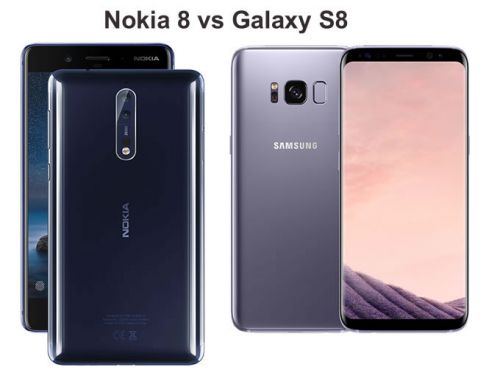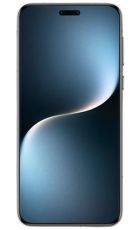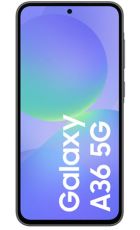Before Samsung and Apple came to dominate the mobile phone market, there was only one brand that really mattered - Nokia. While the Finnish company has taken a few knocks in recent years, it’s back in the flagship phone business with the Nokia 8.
So how does this new pretender shape up to Samsung’s current champion, the Samsung Galaxy S8?
We thought now would be a good time to stick these two titans head to head in a straight up spec shoot-out.
Design
Nokia 8 (151.5 x 73.7 x 7.9mm) vs Samsung Galaxy S8 (148.9 x 68.1 x 8mm)

The Samsung Galaxy S8 is arguably the most beautiful smartphone design on the market, with its innovative dual-curved infinity display and its shimmering glass back.
We wouldn’t say that the Nokia 8 is going to match it in terms of striking looks, with a relatively generic - albeit clean and stylish - design. While the N8 is ever so slightly thinner than the S8 (there’s only 0.1mm in it), it is almost 3mm taller and more than 5mm wider.
Another design win for the Samsung Galaxy S8 is in its level of water and dust resistance. The Samsung’s IP68 certification is higher than the Nokia’s IP54 one.
Ultimately, though, these are two well-built and thoroughly modern glass-and-metal smartphones.
Display
Nokia 8 (5.3 inch 1440 x 2560 IPS LCD) vs Samsung Galaxy S8 (5.8-inch 1440 x 2960 Super AMOLED)
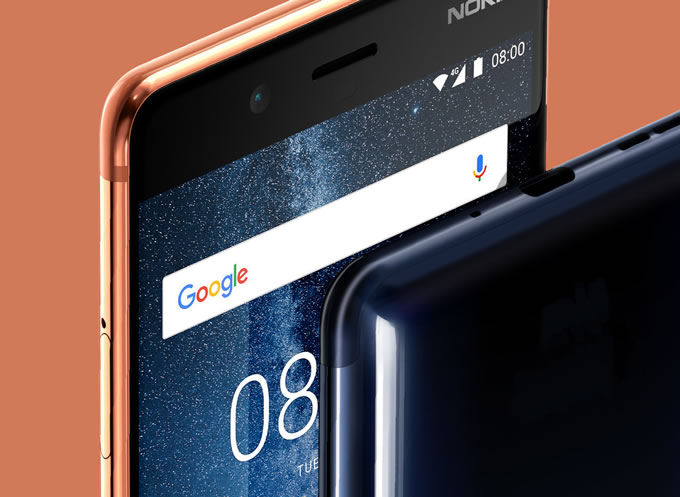
Samsung has made the best smartphone displays in the business for a number of years now. Sure enough, the Samsung Galaxy S8 screen is a thing of beauty.
It’s a whopping 5.8-inch model the nevertheless fits on a normal-sized handset, courtesy of the phone’s minimal bezels and curved edges. More to the point, this is a Super AMOLED display with a QHD resolution.
This means that the Galaxy S8 screen is just about as vibrant and rich in colour as they come, as well as being sharper than it really needs to be (only VR really makes use of all those pixels).
The Nokia 8 screen, on the other hand, is significantly smaller at 5.3-inches, and it’s an IPS LCD display. The latter means that it isn’t as rich in colour as the Galaxy S8 display, and it doesn’t have such deep blacks either.
It too has a QHD resolution, however. Coupled with its smaller size, this means that the Nokia 8 screen is the more pixel-dense of the two.
Power
Nokia 8 (octa-core Snapdragon 835 4GB RAM) vs Samsung Galaxy S8 (octa-core Exynos 8895 4GB RAM)
Both of these phones are positioned near the top of the power food chain with cutting edge CPUs, though they use different chips. The Galaxy S8 fitted with a custom Exynos 8895 and the Nokia 8 with an off-the-shelf Snapdragon 835.
Performance is roughly equal though. Indeed, Qualcomm partnered with Samsung to make the Snapdragon 835 using a tiny 10nm process, and some models of the Galaxy S8 even ditch the Exynos in favour of the Snapdragon.
With both phones featuring the same 4GB of RAM and having displays with the same resolution, we’re going to call it a draw on the performance front.
Camera
Nokia 8 (Dual 13MP rear 13MP front-facing) vs Samsung Galaxy S8 (12MP rear 8MP front-facing)
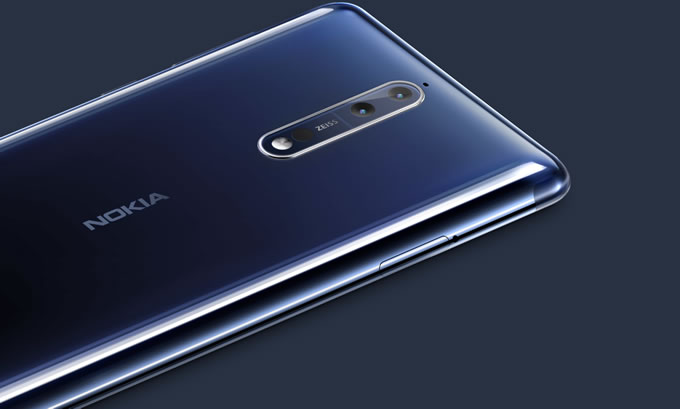
The Samsung Galaxy S8 has a 12MP rear camera with optical image stabilisation, which is basically the same high-quality component as was present in the Galaxy S7 before it.
Meanwhile the Nokia 8 pushes the photographic boat out a little more with a 13MP dual-sensor camera. This employs a second monochrome sensor to aid with the sharpness of your snaps, much like the Huawei P10 and the Essential Phone.
Nokia’s phone is also bolstered by lenses from the highly esteemed German optics maker Zeiss, as well as a sharper 13MP front-facing camera (the S8’s is ‘only’ 8MP).
Of course, this doesn’t necessarily mean that the Nokia 8 camera is better than the Galaxy S8 equivalent. A smartphone camera is about smart software as much as it is about hardware, and Nokia will have to go some to overtake what is widely regarded as one of the best smartphone cameras of recent times.
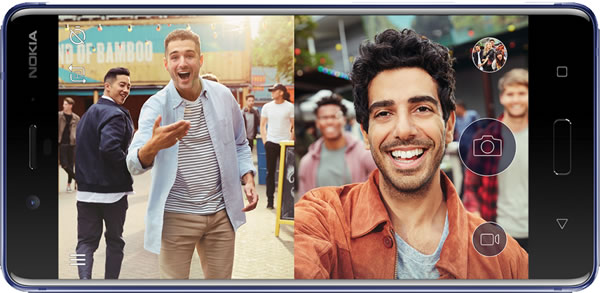
One notable new software trick Nokia is attempting with the Nokia 8 is Dual-Sight, which enables you to take ‘bothies’. This combines simultaneous pictures from the front and rear camera into one image. You can even live stream video footage from both cameras to Facebook or YouTube.
Battery life, memory and connectivity
Nokia 8 (3090mAh 64GB 4G) vs Samsung Galaxy S8 (3000mAh 64GB 4G)
Nokia would appear to have a slight advantage when it comes to battery performance - at least based on pure specs. The Nokia 8’s 3090mAh unit is slightly bigger than the Galaxy S8’s 3000mAh battery.
Beyond that, the Galaxy S8 display is significantly bigger, which typically makes for a more power-intensive component. Again, it remains to be seen if this is so in real world usage.
Both phones come with 64GB of internal storage as standard, and both also feature microSD slots for up to 256GB of expanded storage. Connectivity is also the same with the usual suite of Wi-Fi, 3G, and 4G options for both. NFC and Bluetooth 5.0 can also be found in both phones.
Price and availability
The Nokia 8 will launch in September with a price of €599, which could work out to around £549. On paper that’s significantly cheaper than the Samsung Galaxy S8’s asking price of £689.
However, the Galaxy S8 has been out for a number of months now, and you can find it for around £100 less if you shop around online. This brings it a lot closer to the Nokia 8’s price.
These two phones are set to be close rivals on pricing as well as specs, it seems
Conclusion
Nokia’s return to the smartphone hardware business will be welcomed by almost everyone - except perhaps Samsung, which arguably usurped the Finnish company’s once imperious position.
For the rest of us, the arrival of the Nokia 8 looks likely to add another big-hitting name to the top of the Android market. This looks set to be a well-specced, attractively built phone with all the basic features you’d expect of a 2017 flagship device.
It will have to go some to trump the Samsung Galaxy S8, though - especially on the design, display and camera fronts. Samsung’s phone is arguably the most beautiful on the market, while its massive Super AMOLED screen is the undisputed champ.
With its past expertise in the camera field, though, Nokia will be hopeful of mounting a serious challenge to the Galaxy S8. While the latter has an excellent camera, it’s essentially the same unit as the Galaxy S7 before it. Meanwhile Nokia is bringing Zeiss optics and a novel Dual-Sight system to the party.
We’ll know if this is enough to disrupt Samsung’s market dominance when the Nokia N8 arrives in September.


